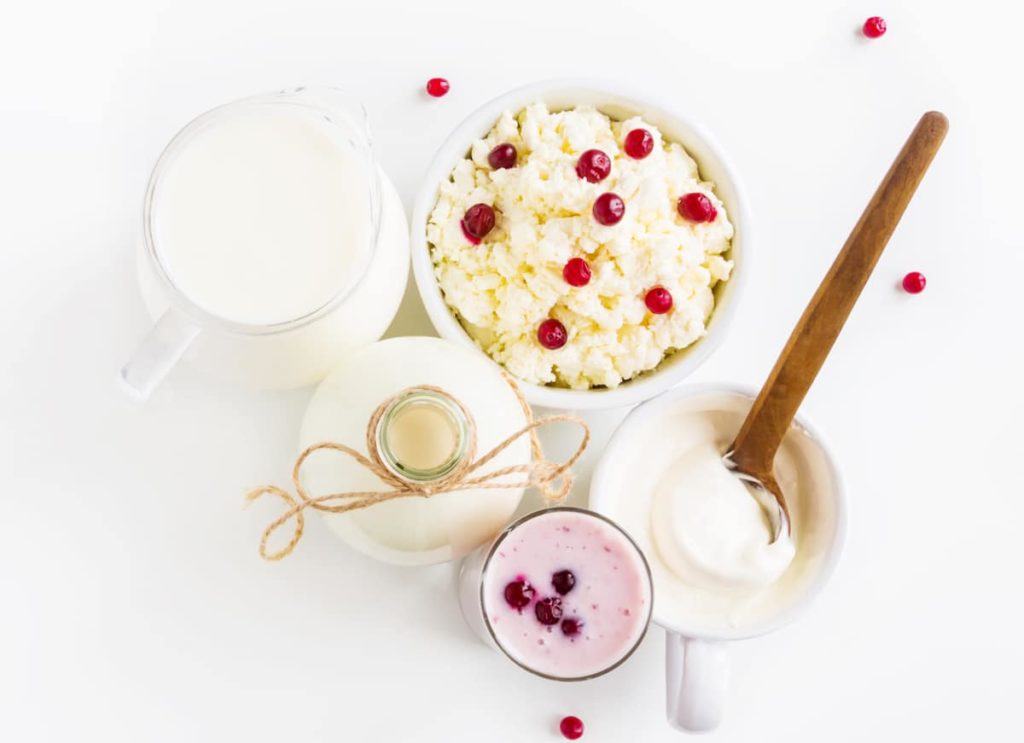Ask the RD: Is kefir like yogurt?

Question: Is kefir like yogurt? Does it have the same health benefits?
Answer: Kefir is a tart, fermented-milk product similar to yogurt. It is thought to have originated in the Caucasus Mountains, where it is traditionally made from cow, sheep or goat milk. Kefir is sometimes slightly carbonated and may contain small amounts of alcohol.
While yogurt ferments with bacteria, kefir ferments with “kefir grains,” bacteria and yeast that form a scoby (symbiotic culture of bacteria and yeast). Kefir grains look like small cheese curds, or chopped cauliflower.
Kefir provides protein, calcium, phosphorus and vitamin A, same as milk, but has the added advantage of probiotic bacteria and yeasts. Like other fermented milks, kefir is associated with numerous health properties (Bourrie, Willing & Cotter; 2016; Rosa et al. 2017; Yamamoto 2016). It has antimicrobial and antifungal properties, as well as wound-healing effects; improves gut flora (probiotic bacteria); and may reduce lactose intolerance.
Kefir has been investigated for lowering cholesterol and blood pressure, providing anticancer protection and benefiting the immune system (it may offer anti-allergenic effects). Depending on their origins, kefir grains can contain a wide variety of bacteria and yeasts, making it difficult to study the specific reasons for kefir’s health benefits (Rosa et al. 2017).
Use kefir in any recipe that calls for yogurt, buttermilk or sour cream, keeping in mind that it is more liquid than yogurt. Kefir is delicious blended into creamy salad dressings like ranch and green goddess, and it makes a wonderful thin tzatziki sauce when combined with garlic, dill, lemon juice and drained, grated cucumber. Traditional borscht (beet soup) recipes often call for stirring kefir into the soup or serving the milk product as an accompaniment.
I eat kefir with seasonal fruit and nuts for breakfast almost every day. In May, the fruit might be apricots or blueberries; in October, it might be grapes or fuyu persimmon. The nuts may be toasted almonds, hazelnuts, walnuts or pumpkin seeds. Kefir makes my breakfast bowl creamy, tangy and even more nutritious.
References
Bourrie, B.C.T., Willing, B.P., & Cotter, P.D. 2016. The microbiota and health promoting characteristics of the fermented beverage kefir. Frontiers in Microbiology, 7, 647.
Rosa, D.D., et al. 2017. Milk kefir: Nutritional, microbiological and health benefits. Nutrition Research Reviews, 30 (1), 82–96.
Yamamoto, N. 2016. Fermented milks: Health effects of fermented milks. Reference Module in Food Sciences. Accessed Aug. 9, 2017: doi.org/10.1016/B978-0-08-100596-5.00775-7.
Sanna Delmonico, MS, RDS, CHES
"Sanna Delmonico, MS, RDN, CHE, is an associate professor at the Culinary Institute of America where she teaches food safety and nutrition. She previously led programming for the CIA Healthy Kids Collaborative and the CIA-Harvard Healthy Kitchens, Healthy Lives Continuing Medical Education Conference. Prior to joining the CIA, she was an instructor at Santa Rosa Junior College where she co-coordinated the dietetic technician program. Sanna develops delicious, seasonal recipes and writes about food and nutrition for publications, including IDEA Fitness Journal. She lives in Napa, California, and is a home winemaker."





